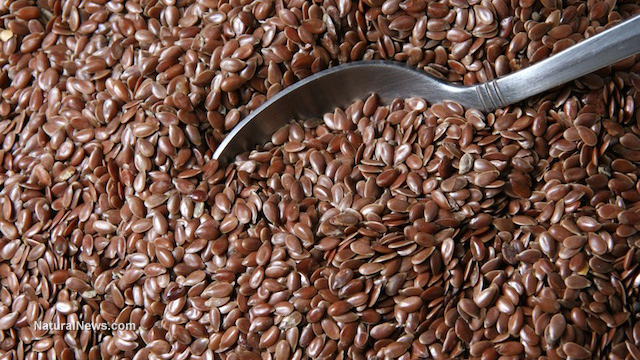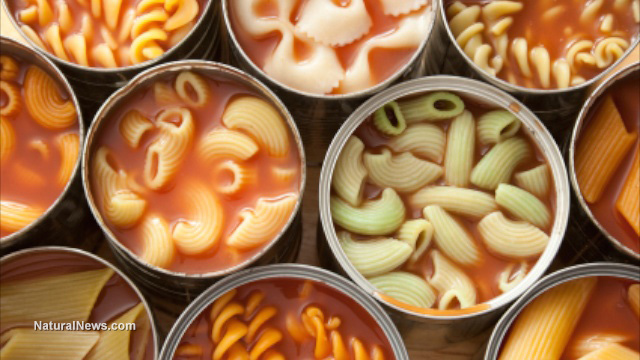Your dust bunnies could be making your children obese, study shows
08/04/2019 / By Tracey Watson

Most of us view dusting and mopping as a necessary but mind-numbing waste of time. However, the results of a recent study by researchers from Duke University might make wielding a mop seem far more important and rewarding.
The study, which involved collecting and examining 194 dust samples from homes in North Carolina, found that household dust contains upwards of 70 different chemicals, some of which trigger the development and rapid duplication of fat cells.
As reported by the U.K.’s Daily Mail, the research confirmed a clear link between dust containing these chemicals – which usually come from cosmetics, paint or laundry detergent residue released into the air – to households where children are overweight or obese.
In other words, this study proves that household dust could be making your children fat, and therefore elevating their risk of multiple serious health conditions, including diabetes and heart disease.
The results of the study were released at the annual meeting of the Endocrine Society.
Chemicals that promote fat cell development
The results of the study are disturbing in that they found that even low-level dust exposure can trigger obesity. Half of the dust extracts examined were found to promote the proliferation of fat cells at only 100 micrograms – 1,000 times less than the 60 to 100 milligram average daily dust consumption of most children. (There are 1,000 micrograms in one milligram.)
In addition, a second part of the study which examined 111 different chemicals found in the dust samples, found a correlation between 70 of them and a “significant positive relationship with the development of dust-induced fat cells,” while 40 were linked to “precursor fat cell development.”
“Interestingly, the greater the extent that the dust was able to promote fat cell development, the greater the BMI of the people living in those homes,” Christopher D. Kassotis, Ph.D., postdoctoral research associate at Duke University’s Nicholas School of the Environment, noted in a press release. “We demonstrated a relationship between the chemicals present in the indoor environment and metabolic health.” (Related: Household dust contains toxic chemicals that can cause infertility and cancer.)
Obesity not the only health condition linked to household dust
As noted by the Mail, the chemicals in household dust carry other serious health risks in addition to the likelihood of causing obesity:
Failing to do the housework properly can expose people to cancer-causing chemicals, which are widespread in dust.
Harmful phthalates – typically found in everyday items such as food packaging, hair spray, cosmetics and soaps – have been linked to health problems ranging from asthma and ADHD to early menopause.
When chemicals are released by these everyday items they get into the air and end up in the dust that settles on our floors and household items. (Related: Household dust exposes families, children to toxic levels of brain-damaging flame retardants.)
Scientists from George Washington University found that at least 45 of these potentially toxic chemicals are commonly used in the manufacture of household items, and found that 10 of these dangerous chemicals were present in 90 percent of dust particles analyzed, including a cancer-causing chemical known as TDCIPP.
These particles can be breathed in or absorbed through the skin, and young children are particularly vulnerable to their effects.
Clearly, there are far more important reasons to dust and mop our homes thoroughly than just the importance of cleanliness and good hygiene. Keeping our homes super clean will also help prevent obesity in our children and protect them from the risks of cancer and other health conditions linked to the chemicals found in household dust.
Learn more about the dangers our children are exposed to through household dust at Chemicals.news.
Sources for this article include:
Tagged Under: cancer, chemicals, child health, children, clean home, cleaning, dust, dusting, house, household dust, indoor air, mopping, obesity, overweight, overweight children, parenting, research, slender, toxic chemicals
RECENT NEWS & ARTICLES
COPYRIGHT © 2017 FIGHTOBESITY.NEWS
All content posted on this site is protected under Free Speech. FightObesity.news is not responsible for content written by contributing authors. The information on this site is provided for educational and entertainment purposes only. It is not intended as a substitute for professional advice of any kind. FightObesity.news assumes no responsibility for the use or misuse of this material. All trademarks, registered trademarks and service marks mentioned on this site are the property of their respective owners.



















